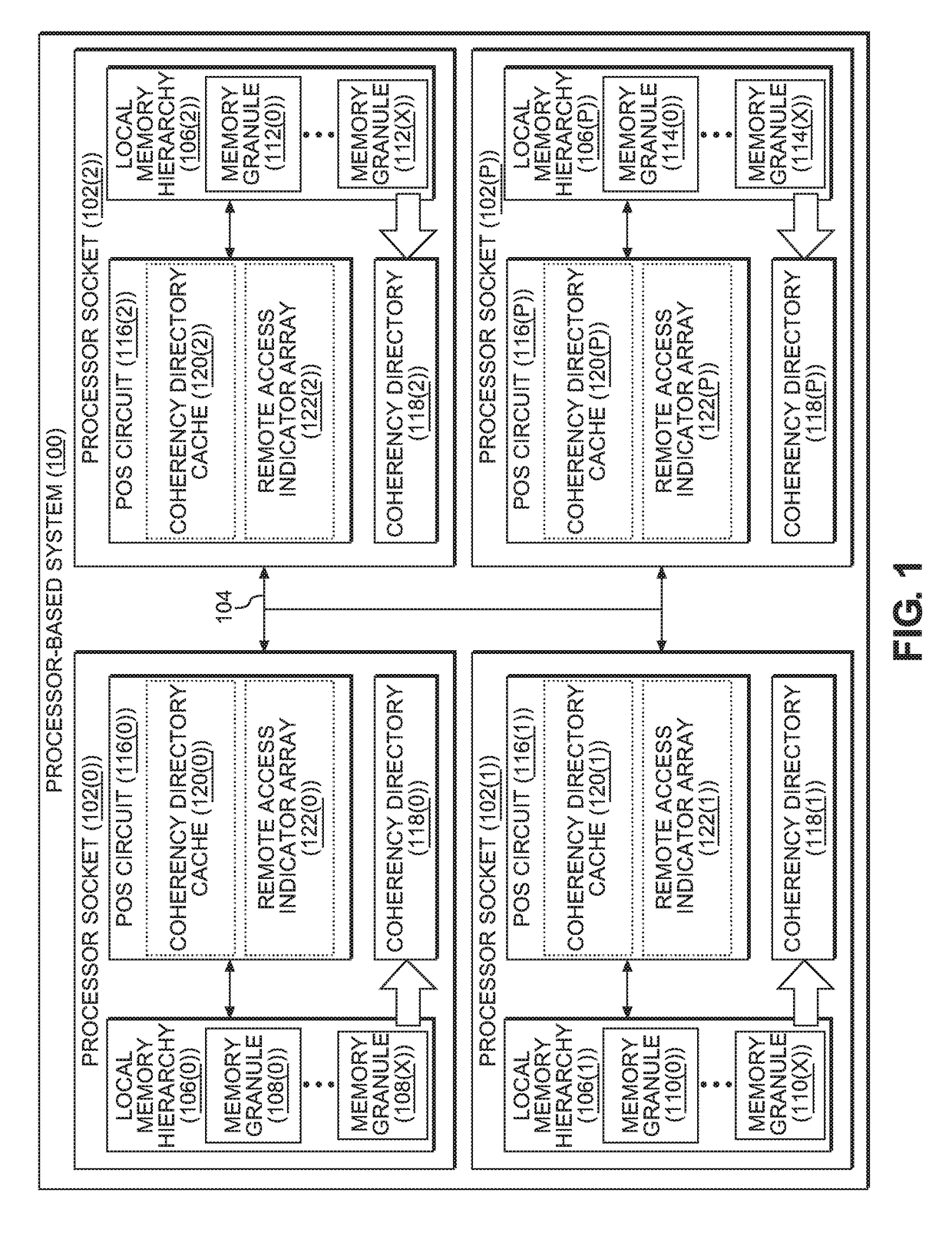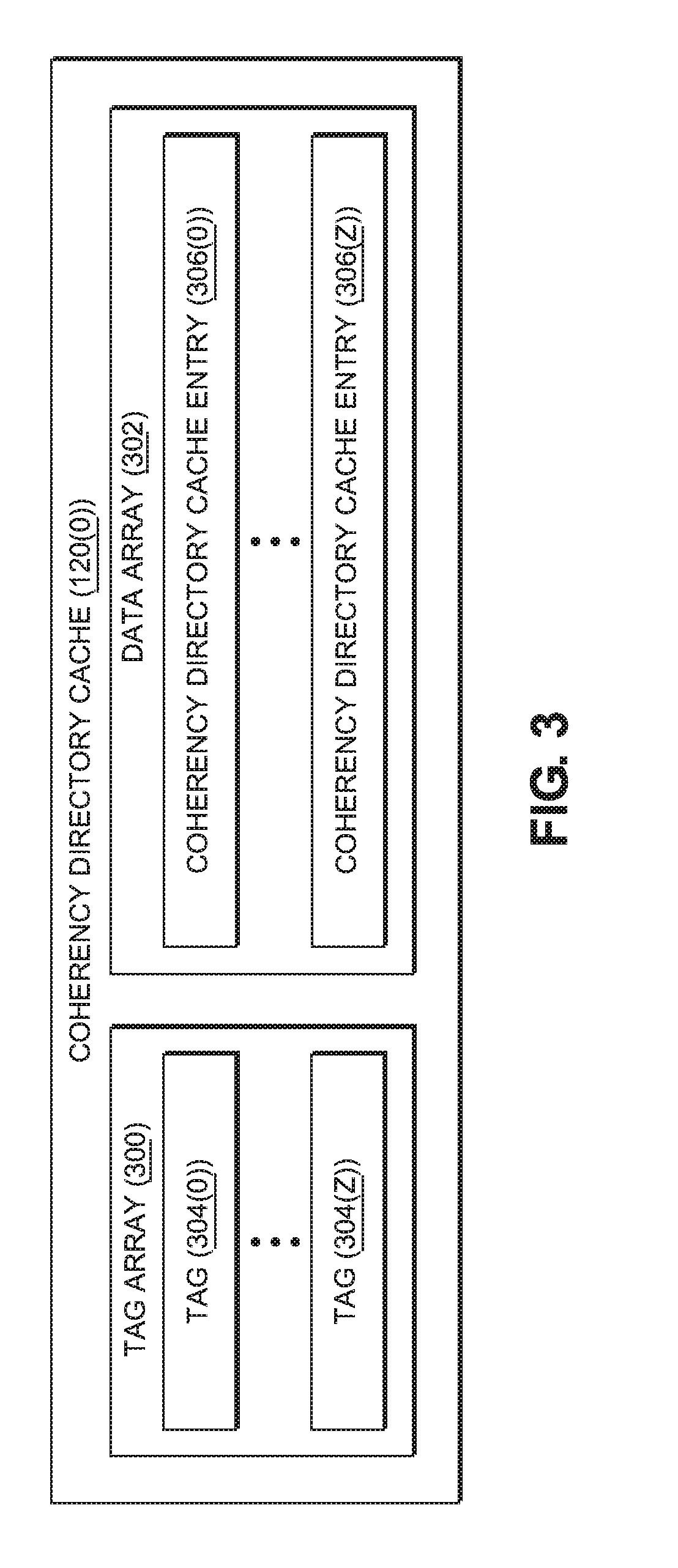Providing multi-socket memory coherency using cross-socket snoop filtering in processor-based systems
a processor-based system and memory coherency technology, applied in the direction of memory architecture accessing/allocation, instruments, computing, etc., can solve the problems of reducing the bandwidth available for other inter-socket communications, affecting the performance of all processors of multiple processor sockets, and reducing the scalability of mechanisms for larger caches and/or processor sockets, etc., to reduce the occurrence of unnecessary cross-socket snooping and improve system performan
- Summary
- Abstract
- Description
- Claims
- Application Information
AI Technical Summary
Benefits of technology
Problems solved by technology
Method used
Image
Examples
Embodiment Construction
[0017]With reference now to the drawing figures, several exemplary aspects of the present disclosure are described. The word “exemplary” is used herein to mean “serving as an example, instance, or illustration.” Any aspect described herein as “exemplary” is not necessarily to be construed as preferred or advantageous over other aspects.
[0018]Aspects disclosed in the detailed description include providing multi-socket memory coherency using cross-socket snoop filtering in processor-based systems. In this regard, FIG. 1 illustrates an exemplary processor-based system 100 that provides multiple processor sockets 102(0)-102(P). Each of the processor sockets 102(0)-102(P) represents a connection point for a processor (not shown), such as a central processing unit (CPU), and other associated elements. The processor sockets 102(0)-102(P) are linked via an interconnect bus 104, over which inter-socket communications (such as snoop requests, as a non-limiting example) are communicated.
[0019]...
PUM
 Login to View More
Login to View More Abstract
Description
Claims
Application Information
 Login to View More
Login to View More - R&D
- Intellectual Property
- Life Sciences
- Materials
- Tech Scout
- Unparalleled Data Quality
- Higher Quality Content
- 60% Fewer Hallucinations
Browse by: Latest US Patents, China's latest patents, Technical Efficacy Thesaurus, Application Domain, Technology Topic, Popular Technical Reports.
© 2025 PatSnap. All rights reserved.Legal|Privacy policy|Modern Slavery Act Transparency Statement|Sitemap|About US| Contact US: help@patsnap.com



